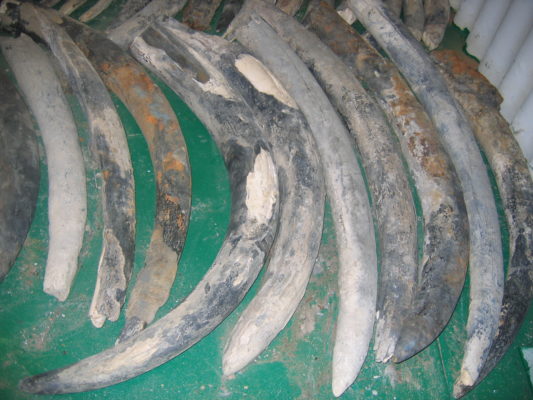Whilst mining for diamonds in 2008, mine workers in Oranjemund, Namibia found over 40 tons of cargo from a shipwreck buried under the sand for centuries. The ship is likely the Portuguese vessel Bom Jesus, which wrecked off the coast of Namibia in 1533 AD, and the artefacts found reveal aspects of European trade and contact with the western African coast in the early 16th century. The wreck was excavated as a rescue operation, and diamond mining continues along this stretch of the Namibian coastline. Among gold and silver coins, copper ingots, and navigational equipment, 100 complete tusks of elephant ivory were excavated and are currently being curated in the mine.
In order to build a research and heritage project on the wreck, together with colleagues from the USA, South Africa, and Namibia, we started a program of biomolecular analyses on the 100 elephant tusks. We used a combination of ancient DNA and stable isotope analyses (δ13C and δ15N) to source the ivory to African habitats. Our results show that the shipwreck ivory comes from 17 different elephant herds of African forest elephants (Loxodonta cyclotis) which lived in mixed savanna habitats in inland western Africa. Our study shows that a combination of techniques can be employed to determine the provenance of shipwreck cargo, to compare the genetic characteristics of ancient and modern wildlife populations, and to highlight the connectivity of African exchange networks with maritime trade routes. We hope that these data will aid in the exhibition of the shipwreck and artefacts in the National Museum of Namibia, as well as showcase the outstanding potential of research on these materials.
Ashley Coutu is a Research Fellow and Deputy Head of Research at the Pitt Rivers Museum. She is an archaeologist with interests and training across fields such as historical and medieval archaeology, African archaeology, isotope ecology, zooarchaeology and historical ecology. Over the last decade, she has researched African exchange networks from the last 2,000 years, focusing on ivory as a material. She is also interested in the use of scientific techniques to understand how past people utilised ivory, and to explore its trade, use, and value over time in different cultures.
She received a BA from Boston College, USA in 2005, then moved to the UK to complete an MPhil in World Archaeology from the University of Cambridge in 2007. From 2007-2011, she completed her PhD as a Marie Curie Early Career Researcher on the EU-funded Historical Ecologies of East African Landscapes project at the University of York. Her PhD used a combination of archival, archaeological, and biomolecular data to understand the impacts of the 19th century ivory trade on elephants, humans, and landscapes along caravan routes in East Africa. In 2012, she moved to Denmark as a postdoctoral researcher on the Entrepôt project and from 2013-2017 was based at the University of Cape Town, South Africa, holding a Claude Leon fellowship and then a Marie Curie International fellowship. The two fellowships centred on a project to map African ivory trade networks from the last 2,000 years by analysing ivory working materials, ivory objects, and other small finds from archaeological sites across southern Africa. After moving back to the UK in 2017, Ashley spent time as a Visiting Research fellow at the Sainsbury Centre for Visual Arts at the University of East Anglia and then took up a post as a Lecturer in Archaeology at Newcastle University before landing in Oxford in 2019.
To register go to the Rye Free Library


